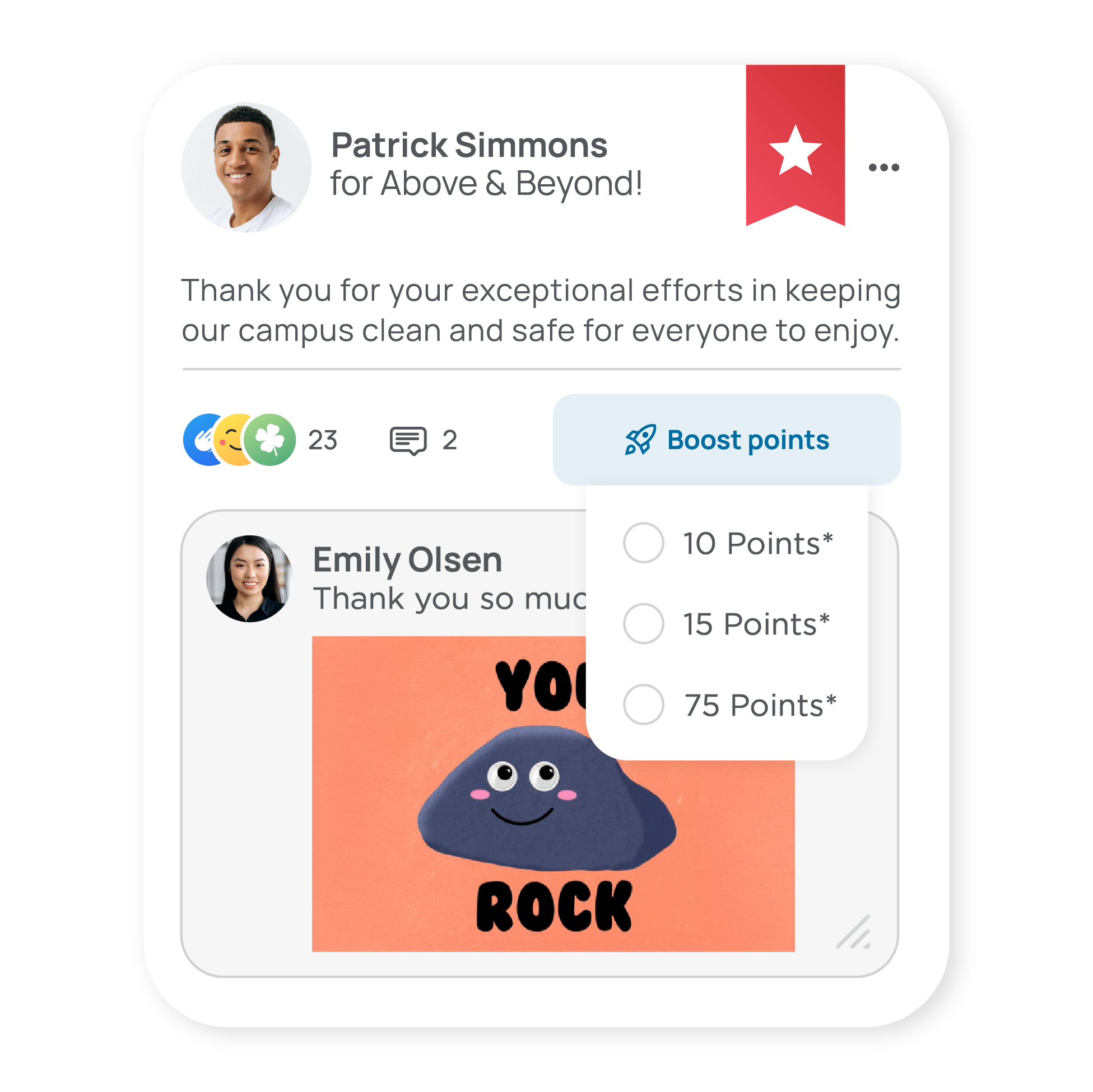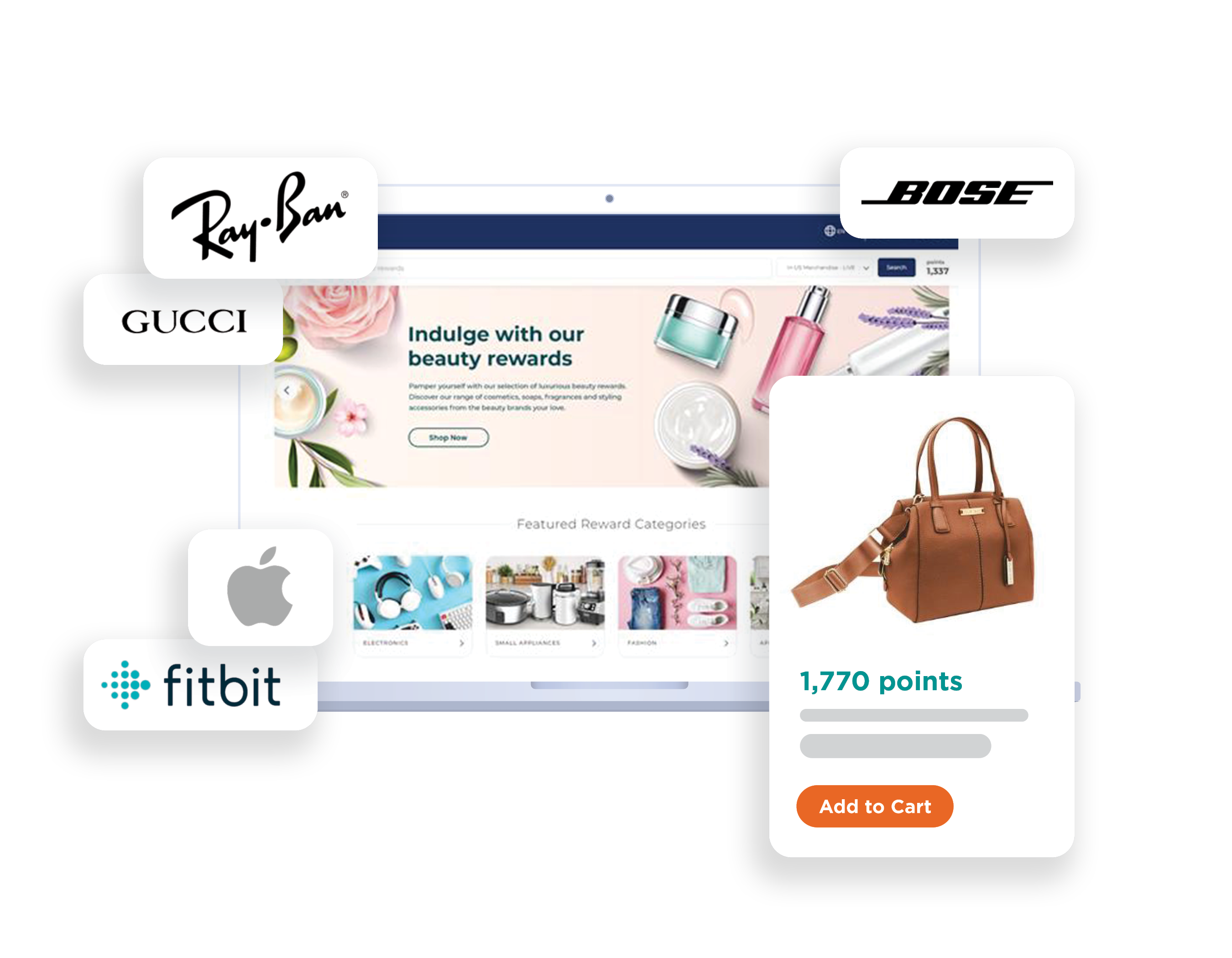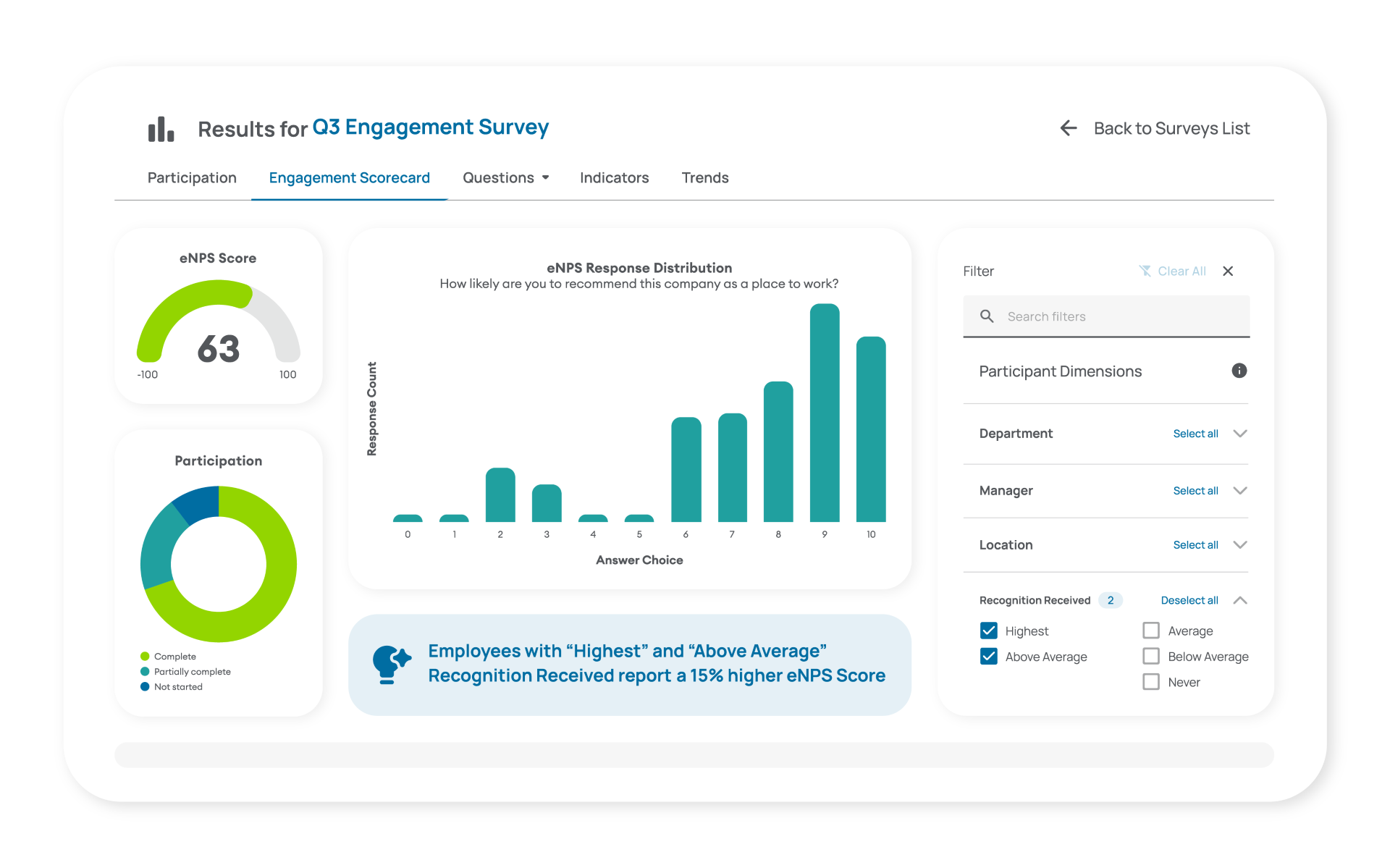July 18, 2025

Looking for effective ways on how to reward employees? This article breaks down simple and impactful strategies to keep your team motivated and loyal.
Key Takeaways
- Recognizing employees boosts productivity, loyalty, and retention, leading to a thriving workplace culture.
- A diverse range of rewards, both monetary and non-monetary, caters to individual preferences and enhances employee satisfaction.
- Effective recognition programs should be structured, personalized, and inclusive to create a lasting impact on employee engagement and morale.
The Importance of Rewarding Employees
Employee recognition isn't just a feel-good gesture; it's a cornerstone of a thriving workplace. When employees feel recognized, they're 63% more likely to stay at their current job and 4.6 times more likely to feel empowered to perform their best work, according to Gallup. This sense of appreciation boosts their productivity and overall job satisfaction. Rewarding employees preserves a motivated and engaged workforce, which directly impacts business success.
Organizations that actively recognize and reward employees enjoy significantly lower turnover rates—up to 31% lower, according to a SHRM study. This is because recognition fosters a sense of loyalty among employees, making them more likely to stay with the company. Moreover, some research suggests that feeling appreciated increases employees' determination and motivation levels, leading to 44% higher engagement.
Furthermore, companies with strong recognition programs are 12 times more likely to have strong business outcomes and five times more likely to attract and retain top talent. Consistent rewards foster a positive workplace culture where employees feel valued and eager to contribute to the company’s values and success.
Types of Employee Rewards
Employee rewards can be broadly categorized into monetary and non-monetary options. Offering a variety of rewards helps cater to individual preferences, leading to increased employee satisfaction and retention. This diversity ensures that every employee feels appreciated in a way that resonates with them personally.
Monetary rewards, such as bonuses and raises, provide immediate, tangible benefits that can significantly boost motivation. On the other hand, non-monetary rewards, which include professional development opportunities and flexible working conditions, focus on long-term satisfaction and growth, ultimately leading to engagement.
Both types of rewards play crucial roles in maintaining a motivated and engaged workforce.
Monetary Rewards
Monetary rewards are a direct way to show appreciation for employees’ hard work. These can include bonuses, raises, and profit sharing, all of which are essential for motivating employee performance and loyalty.
Bonuses and raises, in particular, incentivize employees by recognizing their contributions, especially when the goals are clear and achievable. Gift cards are another popular option, providing a flexible reward that employees can use at various retailers and for different experiences.
Profit sharing and commission programs also encourage employee engagement by directly linking performance to financial rewards. These types of financial incentives effectively boost morale and motivation.
Non-Monetary Rewards
Non-monetary rewards are equally important in fostering a positive workplace culture. These rewards focus on recognition, appreciation, and experiences rather than financial gain.
Offering extra time off can be a powerful non-monetary reward for exceptional performance, while flexible working hours enhance work-life balance and employee satisfaction.
Professional growth opportunities, such as training programs, workshops, and mentorships, are highly effective non-monetary rewards.
These strategies not only recognize employees but also contribute to their long-term development and satisfaction through recognition strategies.
Creative Ways to Reward Employees
Implementing creative rewards can make them both memorable and offering rewards meaningful, encouraging the desired behaviors.
1. Personalized Gifts
Personalized gifts have a profound impact on employee morale. Examples of fun gifts include:
- Engraved nameplate – with their name and job title or a motivational quote.
- Custom calendar – featuring photos from company events or milestones.
- Personalized insulated tumbler or mug – with their name, favorite color, or department logo.
- Custom snack box – filled with their favorite treats or dietary-specific snacks.
- Custom throw blanket – embroidered with their initials or the company’s anniversary year.
- Personalized candles or aromatherapy kits – with calming scents and a note just for them.
- Award plaque or trophy – featuring their name, achievement, and date.
- Custom puzzle or board game – featuring a team photo or inside joke.
- Personalized Spotify playlist – curated for them and delivered with a custom card.
- Digital caricature – of them or the whole team, with personalized elements.Recognizing employees on their work anniversaries with a service anniversary award and a thoughtful gift shows appreciation.
Small gestures, such as handwritten notes or a designated parking spot, are other great ways to express appreciation and make employees feel valued.

2. Public Recognition
Public recognition is a powerful way to acknowledge employee achievements. Featuring outstanding employees in the company newsletter or social media post serves as a creative way to recognize their contributions, including verbal and written recognition. A personal shoutout from the CEO can significantly enhance the impact of public recognition.
Spotlighting employee achievements is a cost-effective method to enhance morale without financial expenses. This can be done by:
- Highlighting achievements on a company intranet or social media platforms
- Publicly acknowledging employee achievements during team calls
- Recognizing achievements in town hall meetings
These actions play a crucial role in boosting morale and fostering a positive work environment.
3. Extra Time Off
Bonus PTO is a highly effective employee reward because it gives people something they truly value: time. Offering additional paid time off shows that the company cares about work-life balance and employee wellbeing, which can boost morale, motivation, and overall job satisfaction. It also helps prevent burnout by giving employees time to recharge, especially during busy or high-stress periods.
From an employer’s perspective, bonus PTO is a cost-effective reward that fosters loyalty and retention without requiring a large financial investment. Because it’s flexible and can be customized—whether it’s a day off for a birthday, a mental health day, or just a long weekend—it resonates with a wide range of employees and reinforces a culture of appreciation.
Implementing Effective Recognition Programs
Creating structured recognition programs is essential for maintaining employee engagement. Recognition enhances teamwork and collaboration, fostering a supportive workplace atmosphere. A shift towards a supportive environment indicates a positive and inclusive culture that enhances recognition efficacy.
Effective recognition should be sincere, personalized, and tailored to the preferences of employees. It's also key that equitable recognition distribution across teams promotes inclusivity and ensures that all employees feel appreciated. Embedding recognition into the company culture creates a lasting impact on employee satisfaction and loyalty.
Social Recognition
Social recognition refers to the act of acknowledging and appreciating employees' contributions, achievements, and positive behaviors through social channels or platforms within the organization.
Unlike traditional forms of recognition, which may be limited to formal ceremonies or performance reviews, social recognition involves public acknowledgment and celebration of employees' everyday efforts within the workplace community.
Some social recognition platforms, like Terryberry's Be Recognized, are housed via an online platform accessible to all employees in a company, similar to how social media platforms operate.
This employee recognition software encourages peer-to-peer recognition, which can be a great way to open up recognition to the whole organization. When employees feel like they can play an active role, it really builds recognition into the company culture.
Peer-to-Peer Recognition
Peer-to-peer recognition fosters a supportive work culture and enhances team member dynamics. Encouraging peer recognition can promote a sense of camaraderie among employees and contribute to an inclusive workplace.
Programs like peer recognition serve as effective non-monetary incentives, creating a culture of support and encouragement among employees. Recognizing each other’s achievements helps employees feel more connected to their team and the organization as a whole.
Points-Based Systems
Some companies show employee recognition by using points to reward employees. These points can then be redeemed for merchandise, events, or experiences. This is oftentimes done through an online portal, like a social recognition site or redemption platform.
Terryberry's platform conveniently houses social recognition and a reward platform all on one platform. This allows employees to send and receive points and then shop for rewards seamlessly.
These employee incentive programs provide a flexible and engaging way to reward employees. By allowing employees to accumulate points, companies can create a sense of achievement and motivate employees to strive for excellence.
Enhancing Employee Motivation
Maintaining and boosting employee motivation is crucial for any thriving workplace. Using employee rewards is one way to help employees feel a sense of belonging and connection, which is essential for motivating employees.
Infrequent recognition can contribute to employee disengagement and lower morale. Meaningful recognition and consistent recognition, on the other hand, helps build a growth culture and foster an engaged workforce.
Regular Feedback
Consistent feedback can improve employees’ perception of their value to the company. Regular feedback is crucial for maintaining employee motivation and engagement. When employees receive regular feedback, they feel more connected to the organization’s goals and their roles within it.
Providing frequent performance feedback can help drive engagement and enhance overall productivity on a day to day basis. This practice helps employees gather feedback on their strengths and areas for improvement, leading to better performance and job satisfaction.
Career Development Opportunities
Enhancing employees’ skills is crucial for long-term employee engagement and satisfaction. Access to training and mentoring programs is a great option for employees’ career advancement. Another option is to sponsor an employee’s admission fees into a professional organization or class. This helps communicate care for career development and provides networking and learning opportunities.
By offering career development opportunities, companies can create a positive work environment that supports employee growth. This approach not only enhances job satisfaction but also helps retain top talent.
Common Pitfalls to Avoid
While employee recognition programs can boost productivity, retention, customer satisfaction, and morale, if poorly executed, they may cause unintended challenges.
Unhealthy Competition:
Without fair and consistent administration, recognition programs can foster unhealthy competition. While some competition can drive performance, overemphasis on rewards may create a tense, counterproductive atmosphere.
Risk of Lower Productivity:
If recognition is tied to unrealistic goals or flawed metrics, employees may resort to cutting corners to earn rewards. This can undermine overall productivity and work quality.
Resource Intensive:
Recognition programs require thoughtful planning and ongoing commitment. When approached as a quick fix, they can waste time and resources without delivering meaningful results.
Perception of Replacing Compensation:
If recognition is used in place of fair pay or raises, employees may feel undervalued. It's essential to pair recognition with appropriate financial compensation to maintain trust and morale.
Measuring the Success of Your Rewards Program
Measuring the success of your rewards program is essential for continuous improvement. Regular pulse surveys can measure changes in employee morale attributed to recognition initiatives. Gathering feedback on recognition efforts can provide insights into perceived program effectiveness and areas for improvement.
With Terryberry's recognition platform, users can link recognition trends to key business metrics to amplify what works and fix what doesn’t. Our platform:
- Correlates recognition data with retention, eNPS, and engagement.
- Tracks how engagement evolves over time with automated trend analysis.
- Generates powerful reports comparing recognized vs. non-recognized employees.
Uncover actionable insights into how recognition impacts job satisfaction, retention risk, leadership acceptance, employee well-being, belonging, and more.
Analyze how engagement evolves with data visualization of trends, heatmaps, and people data filters. Guide action plans with data from powerful insights comparing recognized vs. non-recognized employees.
Get started with Terryberry today.




